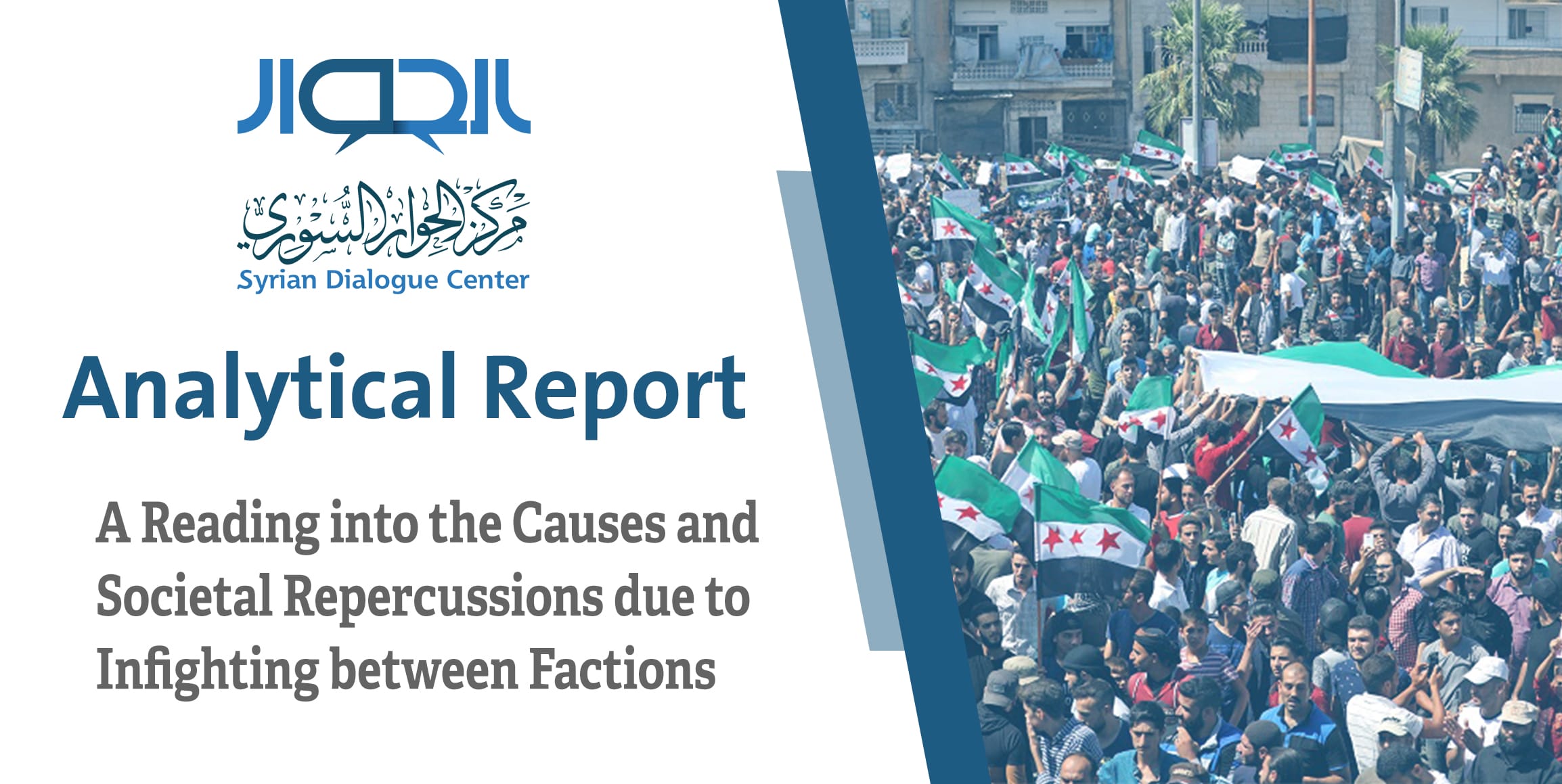
A Reading into the Causes and Societal Repercussions due to Infighting between Factions
Analytical report produced by the societal unit of the Syrian Dialogue Centre
The recent clashes between factions that happened in October of 2022 and lasted for about a week have raised a lot of interest and worries, mainly due to the acceleration of its events and the magnification of its area. Producing a lot of discussion and analyses focused on the various militaristic factions and their projects as well as relation and alliances between them.
These clashes started when the activist “Muhammad Abu Ghanum” and his wife were assassinated; it was proved that agents from Al-Hamza Squad (commonly known as Hamzat) were involved in their assassination under direct orders to eliminate him. And so, the Third Corps -Aljabha Asshamiyyah and Jaysh Al-Islam- tracked and arrested the cell, then occupied Al-Hamza Squad’s headquarters in the city of Al-Bab, largely igniting the tensions that followed.
Al-Hamza Squad thus mobilised and formed alliances with various factions such as Suleiman Shah’s Squad (commonly known as Al-Ashmat), joined then by “Hay’at Tahrir al-Sham” HTS which truly changed the balance of the struggle. Together with their allies occupied Afrin and its countryside, controlling the Third Corps’ headquarters there, and then moved towards Izaz -the Third’s homebase- and many heavy clashes erupted in Idlib’s countryside, an area under Turkish influence. The clashes lasted for almost a week before the Turkish army got involved and forced “HTS” to withdraw and apply the clauses of the agreement signed by all sides.
This infighting has indirectly revealed the loose joints in the structure of societal relationships caused by factional structure in the region, and the affects of regional and economic conditions as a motivation to fight or resist, as well as widening societal divide. In the report we attempt to shed a light on some of these societal and economic aspects that appeared as motivations to fight, or the ones resulting or produced by it. We attempt to track urgent societal changes that rewrite the fabric of society according to the emerging power poles, the report will focus on analysing the societal repercussions to the structure of militaristic factions and its effect on the local populous. As well as studying the effect of “HTS” entering the region, and focusing on what can be called “factional regionalism” being a primary factor in rearranging social links. The report also touches upon popular movements and the competition over the loyalty of the local populous being one of the main factors in the way events played out, not to mention the way the clashes affected security and societal stability and specifically its negative repercussions on the educational sector. It also points at how the economic conditions where a motivating factor for the conflict.
This report was written using the descriptive analytical method; it mainly relies on interviews conducted with local civilians in the areas of conflict.
This report aims to answer the following questions:
- What is the background and societal factors that motivated the recent clash between factions?
- What are the repercussions of these clashes and what are their political and societal dimensions?
مؤسسة بحثية سورية تسعى إلى الإسهام في بناء الرؤى والمعارف بما يساعد السوريين على إنضاج حلول عملية لمواجهة التحديات الوطنية المشتركة وتحقيق التنمية المستدامة





